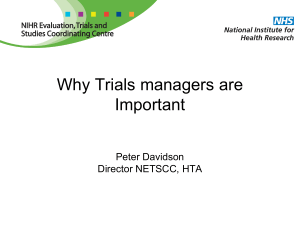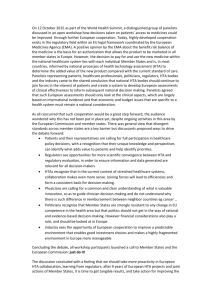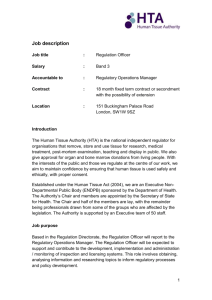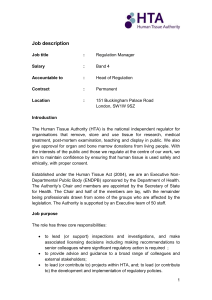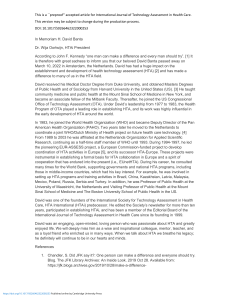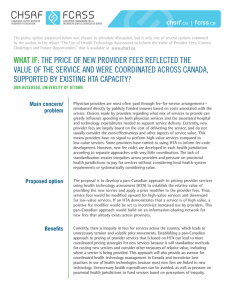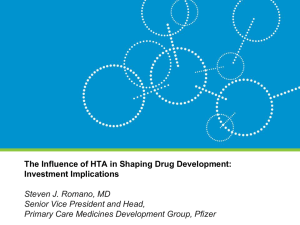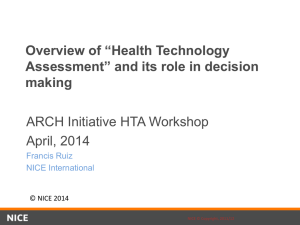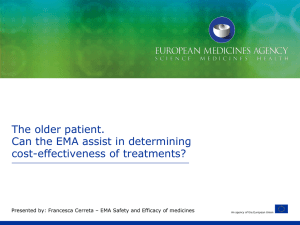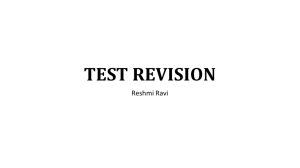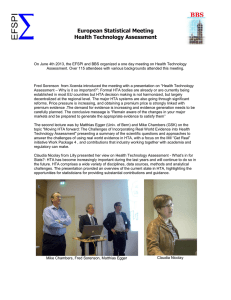Document 12998201
advertisement
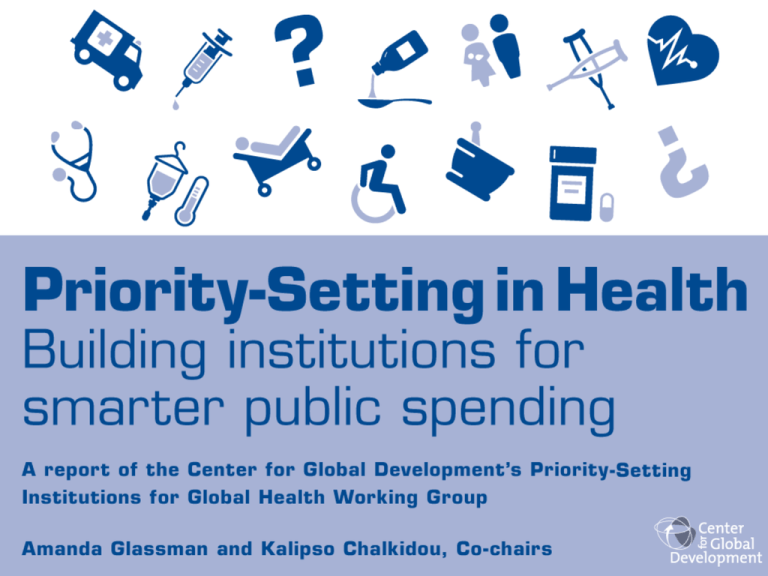
versus Inertial, implicit and ad hoc resource allocation can result in low value and inequity Image: DFID - UK Department for International Development/ CC Image: flickr user mtsofan/ CC Competing interests in an ad hoc process drive these perverse choices Explicit prioritysetting can help achieve global health goals Goal is universal coverage of highly c/e, pro-equity health benefits, not cost control and denial of care. versus Image: Canadian Press) / CC Forces converging to make explicit priority-setting necessary and possible • Huge health gains are possible • Health spending growing, markets too • Legal actions more common For a given budget, there are large differences in obtainable health impact Cost-effectiveness of 108 health interventions evaluated in DCP2 Cost-effectiveness of HIV/AIDS interventions (DALYs per $1,000) Education for high risk groups Condom distribution Prevention of transmission during pregnancy Antiretroviral therapy Surgical treatment for Kaposi’s Sarcoma 0 Source: DCP2, www.dcp2.org 10 20 30 1200 Lithuania Turkey Romania Colombia Brazil Cook Islands Marshall Islands Gabon Dominican Republic Belize China Guyana Mongolia Egypt Sri Lanka Zambia Nigeria India Comoros Pakistan Haiti Guinea-Bissau Per capita total expenditure on health (PPP int. $) Public spending on health is low but growing Health expenditure per capita, Lowand Middle-Income Countries 1000 800 600 400 200 0 Markets are growing too 45 40 Sales growth in Avastin in 2010 42 Growth rate (%) 35 30 25 25 20 15 9 10 5 0 5 1 0 United States Europe Overall Pharmaceutical Growth Source: Giedion (2011), from IMS, OveralI growth pharmamarkets 2010. http://www.pharmaphorum.com/2011/04/06/pharma-emergingmarketslatin-america/; Avastin/Bevacizumab La Roche, annual report. Latin America and the Caribbean Avastin (Bevacizumab) Legal actions are increasingly common • Brazil: 240,000 federal cases in 2010 for a total of $550 million, only medicines • Colombia: 40,000 cases a year; in 2009 litigation cost the public sector $300 million Source: Cubillos et al (2012) Current policy tools: • Essential medicines lists • Health benefits plans • HTA agencies International support has focused on evidence, not advice Number of donor-funded projects related to priority-setting (<0.001% total health aid) Strengthen national HTA systems, supported by HTA hub Improved national HTA Better process Better funding decisions Healthier people Better regional support Seven core processes of priority-setting: “HTA System” 1 • Registration 2 • Scoping 3 • Cost-effectiveness analysis 4 • Budget impact analysis 5 • Deliberative process 6 • Decision 7 • Appeals, tracking and evaluation HTA Hub or Network • Share know-how, TA, knowledge • Generate economies of scale in evidence dossiers • Accredit national HTA systems • Benchmark and compare coverage decisions on high-cost products • Coaching on ethical and transparent deliberative process Challenges • • • • Capacity shortfalls Weak governance Data constraints Connections with payers Moving forward: Flickr user vmaurin Flickr user jo.sau Flickr user sailormoms
